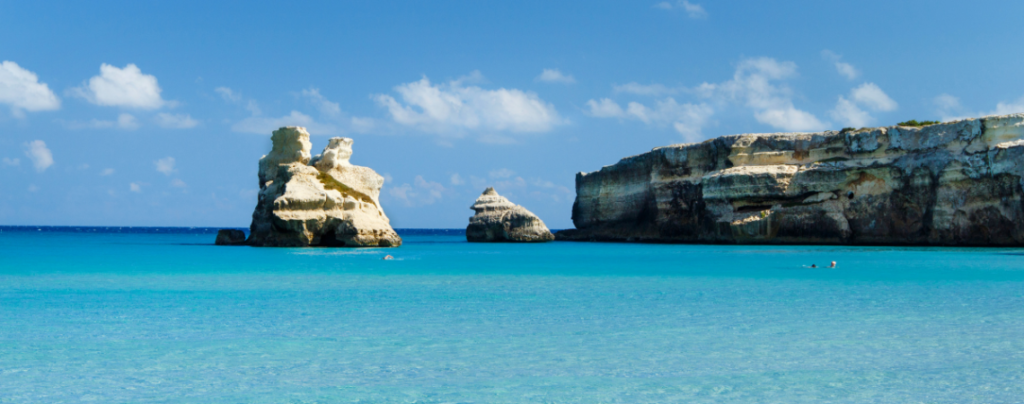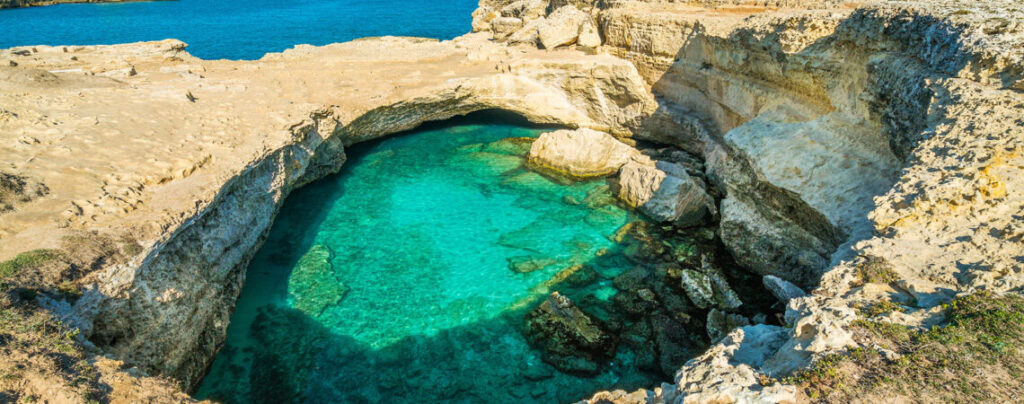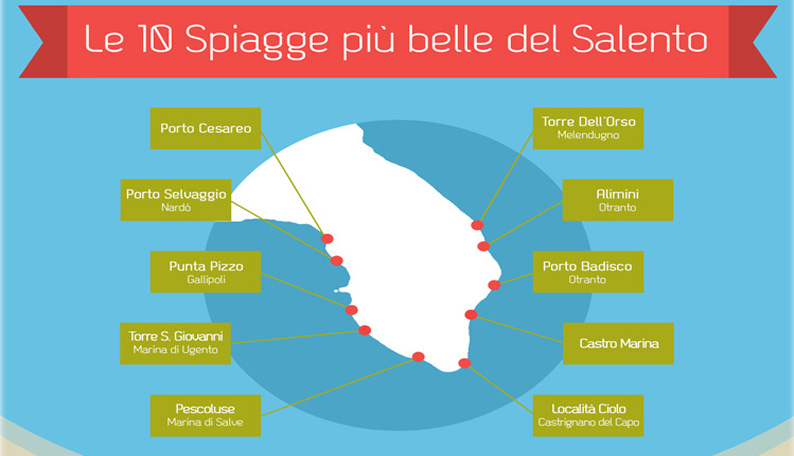The line of Adriatic coast that goes from Santa Maria di Leuca to the WWF reserve “Le Cesine” is a 90 kilometres road that grants wonderful views of cliffs, olive tree groves, pine groves, dunes and Mediterranean scrub.
- SANTA MARIA DI LEUCA: It’s the most southern point of the Salento peninsula, marked by the 1864 lighthouse and by the “The Finibus Terrae” (The end of the Earth) sanctuary. You can visit the beautiful villas on the pier or ancient caverns that once housed Greek and roman populations but where also older evidences that dated back to the Neolithic were found.
- TRICASE PORTO: is a small village with a few villas and a small port, only 17 kilometres away from Castro, and between this two towns there are important and stunning bays such as Marina di Marittima, Marina di Andrano, Acquaviva.
- CASTRO: a fish-men village, its marina faces one of the most breath-taking bays in Puglia. Inscription found in the Zinzulusa cave are proof that this area was already inhabited during prehistory. In Castro you can also find a Romanesque cathedral, the towers and the castle.
- PORTO MIGGIANO: a golden cliff with emerald water, a welcoming natural pool only 7 kilometres away from Santa Cesarea Terme.
- SANTA CESAREA TERME: the many sulphurous waters sources have been exploited for centuries but only in the 19th century the first thermal bath was founded. Heading north the next point of interest is Porto Badisco.
- PORTO BADISCO: a natural creek, the ideal place to taste sea urchins, sold along the street. Nearby there is Orte, the ideal place for snorkelling.
- OTRANTO: the most easterly point of Italy, a maze of little streets surrounded by walls and protected by the Aragonese Castle.
- ALIMINI: a beach of fine sand close to the Alimini lakes and to a thick pine grove, proceeding along the SP 366 the next stop is Torre dell’Orso.
- TORRE SANT’ANDREA: a fishermen bay surrounded by high cliffs. During the summer nights it is crowded by people attending the many concerts that take place there.
- TORRE DELL’ORSO: a white sand bay surrounded by a pine grove. Very famous is the Due Sorelle rock.
- ROCA VECCHIA: important archaeological site that includes many caves, such as “the Poesia”. They are two karst caves whose roof has fallen and have water inside, in fact people can easily dive inside the bigger one of the two, that has turned into a natural salty pool. Proceed through San Foca and Torre Specchia Ruggeri to reach Le Cesine.
- LE CESINE NATURAL RESERVE: a WWF reserve since 1980, with two basins separated from the sea by sand dunes. The vegetation is mainly Mediterranean scrub and holm oak trees, and several insects, reptiles and amphibian populate this reserve, together with more than 170 bird species.













